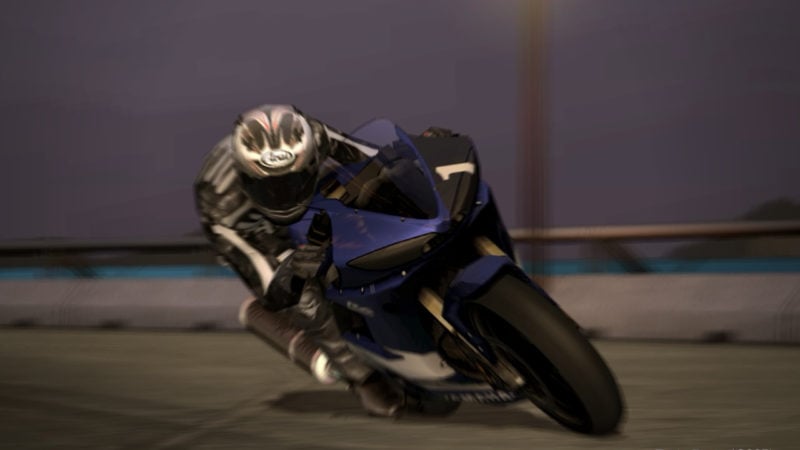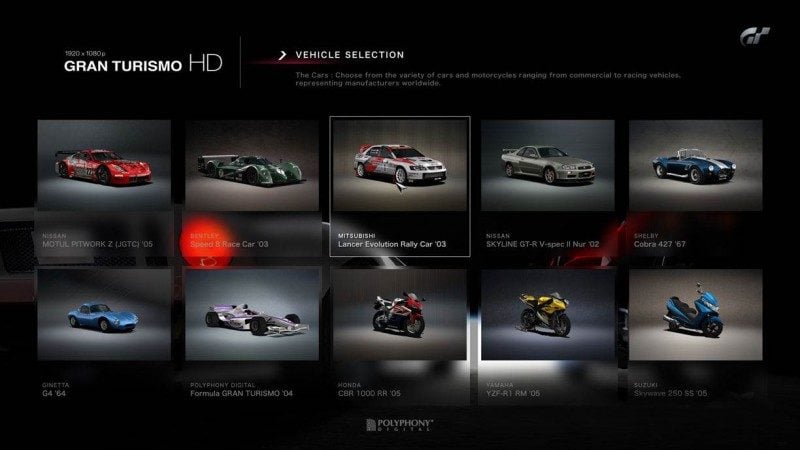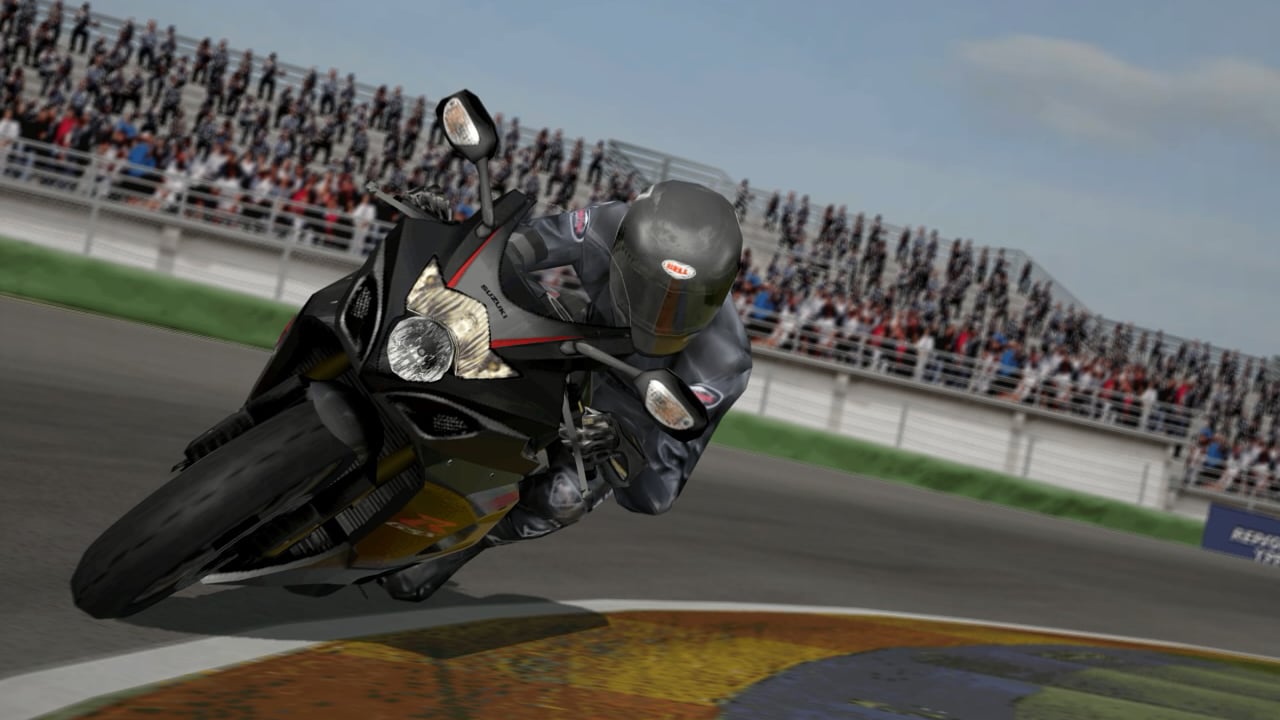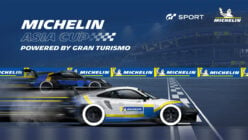I have a friend named Chris. I’ve known Chris since grade school; my earliest memories of going to his house involve wading through a garage filled with motorcycle parts, gear, and a Honda VTR1000F. His dad raced for Honda and Suzuki in the ’80s, which to a couple of eight-year-olds may as well have made him a superhero.
Now, more than 20 years later, Chris rides bikes too. And, as much as he’s enjoying GT Sport, it’s not the Polyphony-developed sim racer he really wanted.
He tells me it’s a common phenomenon among two-wheeled enthusiasts. Chris works at a prominent online motorcycle retailer, and all of his co-workers agree: No game has done bikes better than Tourist Trophy, before or since.
I agree with him. Cars were my first passion, but I’ve watched some MotoGP and dabbled in the games. I’ve tried really, really hard to enjoy Ride. And I made an awful decision at a grocery store checkout aisle many years ago in buying Suzuki TT Superbikes. Driveclub Bikes was the most promise the genre had seen in a decade, but Evolution Studios’ tragic shuttering killed all hope that we might see a triple-A motorcycle racing experience flourish for years to come.
And we’re not the only ones clamoring for a sequel. A thread in our Kazunori Yamauchi Q&A sub-forum asking if Tourist Trophy 2 was under consideration received 220 likes back in 2014. About a year later, Kaz was quoted saying he couldn’t deny it, because he knew there were “a lot of people waiting for it.”

Well Kaz, the time is now. GT Sport has found the franchise back on track. It represents a renewed focus on being the destination for competitive motorsport on PS4. That could easily extend to include motorcycles, if Polyphony sees fit.
It’s Physics, Stupid
If you’ve played Tourist Trophy, you likely know why the game was special. If not, I’ll do my best to explain.
Driving a car is a mostly by-proxy experience. Sure, you use your arms and legs to manipulate the wheel, pedals, and shifter, but you’re many steps removed between those inputs and what happens where the rubber meets the road. Besides, thanks to the efforts of Thrustmaster, Logitech, and Fanatec, we can even play with facsimiles that closely resemble those interfaces.
Behind the wheel, the sensation of mass shifting underneath you is key, but not totally essential to a realistic simulation. The best games can make up for this by accurately representing the behavior of grip at the limit.
Bikes, obviously, are different. How you orient yourself as you negotiate corners is just as important as the direction you turn the handlebars. And, not surprisingly, this is something many, many games have struggled with.
Yu Suzuki’s legendary Hang-On benefited from a physical bike body built into the arcade cabinet, but of course there’s no cost-effective counterpart to that for your living room. So studios have attempted to tackle this problem in a variety of ways.

Some just ignore the rider’s presence altogether, and employ a handling model that’s directly responsive. Press the D-pad left, and the motorcycle instantly squats down and turns left. It’s perfectly acceptable for less serious racers, but when you go back and play games like Manx TT Super Bike or even a more modern example like Midnight Club Los Angeles, there’s something unsettling about the way those bikes move. They’re almost like those inflatable clown punching bags children used to play with — you knock ’em down, then they come right back up like they’re completely weightless.
Alternatively, the approach of more sim-minded developers is to add sort of an input delay, so all the grip isn’t available at once, and it takes the rider a very long time to lean the bike enough to reach the proper line through the corner. This is arguably more realistic, but much less fun. Imagine having all your decisions filtered through a recalcitrant, uncooperative second party. It’s heavy, frustrating, and actively obstructs building any sense of immersion.
That’s how most motorcycle sims do it. Mercifully, Tourist Trophy forges a different path.
Steering is a little heavy, but not stiff. There’s a subtle push-and-pull as the rider leans into the turn, and you feel the weight transfer dynamically. Somehow, Polyphony found a way to make pushing the analog stick feel as though you’re controlling two separate entities, man and machine, cooperating to move the tandem in the desired direction. It’s almost magical, and it’s been unequaled even as console and PC hardware has improved.
There are other reasons why Tourist Trophy is remembered favorably. It inherited Gran Turismo 4’s remarkable engine, a technological achievement on the aged PS2 back in 2006, along with nearly all of that game’s tracks. It brought the car-PG style of progression to a motorcycle sim, which hadn’t happened before. And it did all of this about a year and a half after GT4’s release, when the hype entering the PS3’s life cycle hadn’t yet turned to cynicism.
But let’s be honest — if content was all it took, we wouldn’t need another Tourist Trophy, because we have Ride. We all argue semantics over whether Project Cars’ physics are more accurate than Assetto Corsa’s, or whether Gran Turismo is too easy compared to Forza Motorsport. In the grand scheme of things, all those games drive well enough. Bike fans don’t have that breadth of options. And Tourist Trophy’s handling was a revelation in a genre overrun by milquetoast alternatives.

‘The Real Racing Simulator’
More than a decade later, the image above feels like a cruel tease. Gran Turismo HD, in its original incarnation before it was whittled down to a demo, was supposed to finally unite cars and bikes in one fell swoop. That never happened, but we know it was something Polyphony was mulling over all the way back in 2005.
Gran Turismo HD was intended to be a service, in today’s parlance. It was to be offered as a core platform much smaller in scale than previous, full numbered entries in the franchise, with the opportunity to be greatly expanded through downloadable content over a long post-release lifespan. Sound familiar?
They say everything is cyclical and, well, maybe GT Sport represents the realization of some of those ideas that were just a bit too ambitious a decade ago. Anyone who gamed on the PlayStation Network back then remembers how miserable an experience it was, and the prospect of Polyphony’s next big project carried on the back of Sony’s crippled infrastructure was a recipe for disaster.
But it isn’t anymore. And in GT Sport, Kaz and company have developed a robust engine that bleeds unprecedented performance out of the PS4, that seems fully equipped to handle anything they could throw at it. GT Sport is a solid foundation, polished and complete in a way Gran Turismo 5 and 6 never were.
It’s very hard to imagine Tourist Trophy 2, but it’s so easy to imagine a Driveclub Bikes-style expansion in GT Sport. It could be a great way not only to continue Gran Turismo’s reinvention, but also drum up enthusiasm a year or two down the line, when interest typically wanes.
We know there were reports of Polyphony staff touring the Isle of Man’s 37 mile-long Snaefall Mountain Course several years ago. We also know Takamasa Shichisawa, the mastermind behind Tourist Trophy, returned to the company about four years ago after a brief stint with Studio Liverpool right before its closure. He now works at the GT Explore Studio.
It’s been said many times that GT Sport is the beginning of a new era. If Polyphony wants to prove it, this is exactly how.
Featured image courtesy of RL_23.
See more articles on Opinion Piece and Tourist Trophy.











